Catocala sappho
|
|
Updated as per personal communication from Rick Gillmore, May 7, 2007
|
Catocala sappho
kah-TOCK-uh-lahMSAFF-oh
Strecker, 1874
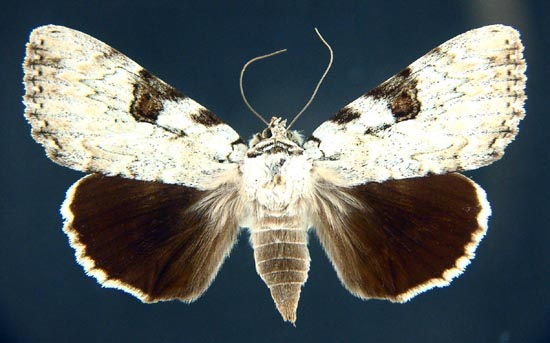
Catocala sappho, (female-Louisiana), courtesy of Vernon A. Brou.
This site has been created by
Bill Oehlke at oehlkew@islandtelecom.com
Comments, suggestions and/or additional information are welcomed by Bill.
| TAXONOMY:
Superfamily: Noctuoidea
Family: Noctuidae
Group: Noctuinina
Subfamily: Catocalinae
Genus: Catocala, Schrank, 1802
| |
MIDI MUSIC
"Moon River"
copyright C. Odenkirk
MIDI CITYON.OFF
<bgsound src="moon.mid" LOOP=FOREVER>
|
DISTRIBUTION:
Forewings are off white with some grey-black-brown peppering and yellow-beige
lines. The reniform spot is brown and the subreniform spot is almost
pure white; the hindwings
are black with a white fringe.
Image courtesy of Troy Bartlett. | 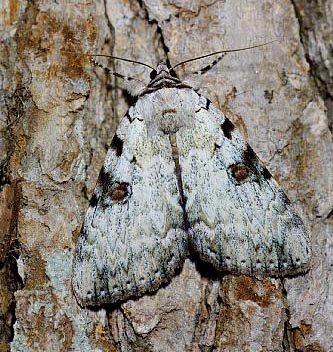
|
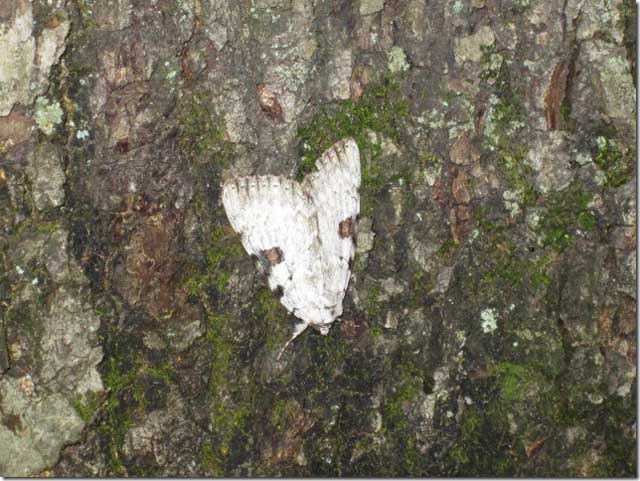
Catocala sappho, courtesy of Thomas Payne.
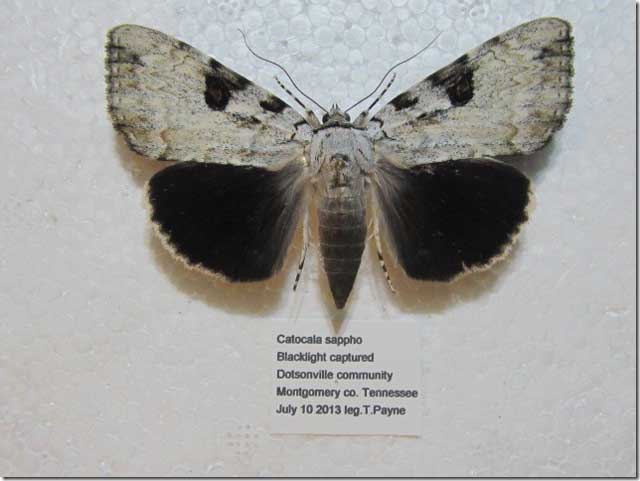
Catocala sappho, Dotsonville, Montgomery County, Tennessee,
July 10, 2013, courtesy of Thomas Payne.
FLIGHT TIMES AND PREFERRED FOOD PLANTS:
Catocala sappho are on the wing from May to July, September to
October in highland areas.
The Catocala sappho caterpillar feeds on Pecan (questionable)
trees .
Rick Gilmore writes, May 7, 2007, "Jeff Slotten was
the first person (that I know) to rear C. sappho. He got ova
and when the larvae emerged, they were reared on hickory, not pecan.
I saw pecan mentioned as a possible hostplant in an agriculture book."
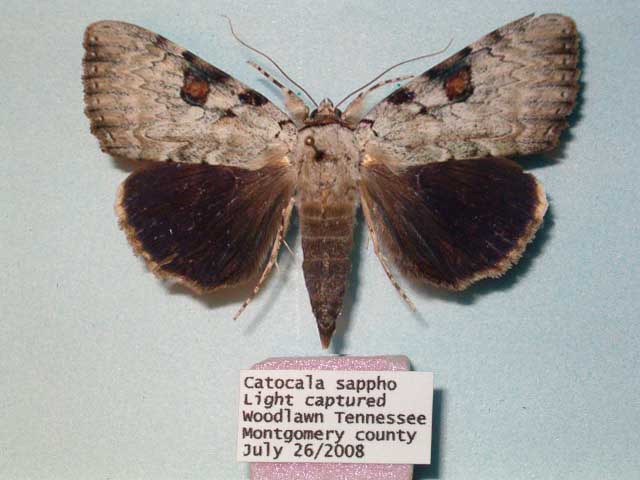
Catocala sappho, lights, Woodlawn, Montgomery County, Tennessee, July 26, 2008, Tom Payne
ECLOSION:
Adults eclose from pupae at soil surface.
SCENTING AND MATING:
Catocala sappho females
emit an airbourne pheromone and males use their antennae to track the
scent plume.
EGGS, CATERPILLARS, COCOONS, AND PUPAE:Eggs are deposited on
tree bark in the fall and hatch the following spring. Image courtesy of James Adams. |
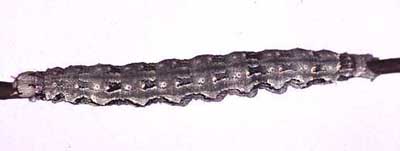 |
Larval Food Plants
Listed below are primary food plant(s) and alternate food plants.
It is hoped that this alphabetical listing followed by the common
name of the foodplant will prove useful. The list is not exhaustive,
although some species seem very host specific.
Experimenting with closely related foodplants is worthwhile.
Carya
Carya illinoinensis .......
|
Hickories (SG)
Pecan questionable
|
Use your browser "Back button to return to the previous page.
Goto Main Catocala Index
This page is brought to you by Bill Oehlke and the
WLSS. Pages are on space rented from Bizland. If you would like to become a "Patron of the Sphingidae/Catocala Sites",
contact Bill.
Please send sightings/images to Bill. I will do my best to respond to requests for identification help.
Enjoy one of nature's wonderments: Live Saturniidae (Giant Silkmoth) cocoons.

|

To show appreciation for this site, click on the flashing
butterfly to the left, a link to many worldwide insect sites. |







